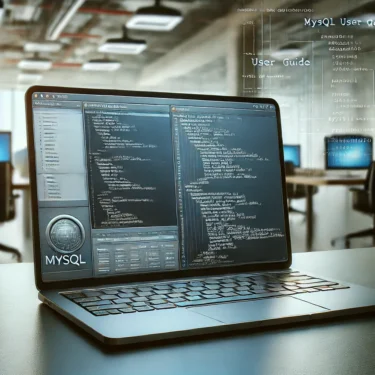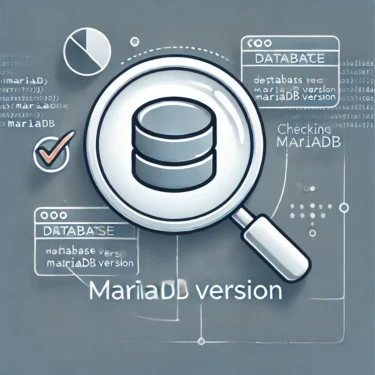目次
1. What is MariaDB
MariaDB is an open-source relational database management system (RDBMS) that originated from MySQL. It was originally created by the developers of MySQL and is designed with a focus on data safety and performance. It is highly reliable for both enterprises and individual users, and a major feature is that it is free to use.Overview and Features of MariaDB
MariaDB is compatible with MySQL and has evolved on MySQL version 5.5. Therefore, migration is easy for MySQL users, and existing databases and code can often be used as‑is. It also incorporates the latest technologies that emphasize security and speed, and it runs efficiently in cloud environments.Differences from MySQL
MariaDB and MySQL are very similar, but their development direction and licensing differ. MariaDB is actively developed by the open‑source community, with new features and performance improvements released frequently. In contrast, MySQL is managed by Oracle and often includes features geared toward commercial use. Additionally, MariaDB adopts some unique SQL syntax and extensions, so there are features that are only available in MariaDB.Main Uses and Benefits of MariaDB
MariaDB is used in a wide range of scenarios, from small websites to large‑scale data analytics. It especially shines in environments that demand speed and scalability. The fact that many cloud service providers adopt MariaDB also demonstrates its high performance and reliability.2. Main Features and Benefits of MariaDB
MariaDB includes many features designed to speed up database processing. Because it is open source, it can be freely used and customized.High-Performance Database Engines
MariaDB supports multiple database engines such as InnoDB and MyISAM, just like MySQL. In particular, the InnoDB engine excels at transaction management, enabling fast processing while maintaining data integrity. In systems that require large-scale data processing, leveraging these engines can maximize performance.Free Use Through Open Source
MariaDB is provided under the GPL (GNU General Public License), allowing anyone to use, modify, and distribute it for free. This enables businesses and individuals to freely build systems with MariaDB and customize it as needed. Additionally, the open‑source community offers robust support, making it easy to find information when issues arise.Support for Large Data and Cluster Environments
MariaDB offers high scalability and operates reliably in large databases and distributed environments. By using features such as Galera Cluster and Replication, data can be spread across, enhancing fault tolerance and performance. This makes it possible to build databases that grow alongside your business.
3. Preparing for MariaDB Installation
Installing MariaDB requires that you prepare the system environment and dependencies. Below we explain the points you should check before installation.Checking System Requirements
To install MariaDB, the server must meet system requirements such as memory and disk space. In particular, large data volumes or high‑load environments demand sufficient memory and CPU power. Check the latest requirements on the official site and ready your infrastructure.Verifying Required Software and Dependencies
Installing MariaDB requires that certain packages and dependencies be installed in advance. For example, on Linux you use package managers like apt or yum to install the needed packages. Also, review firewall settings to ensure access to MariaDB isn’t blocked.The Importance of Backups
Before installing a new database, it’s strongly recommended to back up any existing databases. Especially when migrating from MySQL to MariaDB, compatibility issues can arise, so a pre‑installation backup is essential for data safety.4. MariaDB Installation Steps
The method for installing MariaDB varies by operating system. Below, we explain the installation steps for Windows, Linux, and macOS environments.For Windows
When installing MariaDB on a Windows environment, download the installer from the official site and run it. 1. How to download from the official site Visit the MariaDB official site (https://mariadb.org/) and download the Windows installer. You can select the version on the site, and using the latest version is recommended. 2. Setup steps using the installer Run the downloaded installer and follow the installation wizard’s prompts to set up MariaDB. The wizard lets you choose components and the installation directory. Also, because you’ll be asked to set a root user password on first launch, set a strong password for security. 3. Initial configuration and how to start the service After installation completes, the MariaDB service starts automatically. If you need to manage the service manually, you can start or stop MariaDB from the Windows “Services” management tool. Once the service is configured, connect via the command prompt or a MariaDB client tool to verify it’s running.For Linux
Installing MariaDB on Linux uses different package managers (such as apt or yum) depending on the distribution. Here we present the steps for the common Ubuntu and CentOS. 1. Installation steps using a package manager (Ubuntu)sudo apt update
sudo apt install mariadb-server# Add the repository
sudo yum install -y https://downloads.mariadb.com/MariaDB/mariadb_repo_setup
# Install MariaDB
sudo yum install -y MariaDB-server MariaDB-clientsudo systemctl start mariadb
sudo systemctl enable mariadbmysql_secure_installation script with the next command to set the root password, remove anonymous users, etc.sudo mysql_secure_installationFor macOS
On macOS, you can easily install MariaDB using Homebrew. Follow the steps below to install and configure it. 1. Installation steps using Homebrew First, ensure Homebrew is installed. If it isn’t, follow the instructions on the official site to install it.brew install mariadbbrew services start mariadbmysql_secure_installation
5. Initial MariaDB Configuration
After installing MariaDB, it’s important to perform initial configuration to improve security. Below, we explain basic security settings and how to remove unnecessary databases and users.Setting the root user password
Immediately after installation, the root user often has no password, so set a strong password.ALTER USER 'root'@'localhost' IDENTIFIED BY 'new_password';Removing unnecessary databases and users
MariaDB may include test databases or users right after installation. Use the following commands to delete unnecessary databases and strengthen security.DROP DATABASE test;
DELETE FROM mysql.user WHERE User='';
FLUSH PRIVILEGES;Strengthening security settings
In MariaDB, you can strengthen the default security settings by using themysql_secure_installation command. Follow this command to set the root password, remove anonymous users, disable remote access, and more.6. Basic Operations for MariaDB
Once the installation and initial configuration of MariaDB are complete, learning basic database operations will enable you to use MariaDB efficiently. Below, we explain how to create databases and users, and how to work with tables.Creating and Dropping Databases
Creating a Database To create a new database in MariaDB, use the following command.CREATE DATABASE database_name;CREATE DATABASE example_db;DROP DATABASE database_name;DROP DATABASE example_db;Creating Users and Setting Permissions
Creating a User When creating a new user, use the following command.CREATE USER 'username'@'host' IDENTIFIED BY 'password';CREATE USER 'user1'@'localhost' IDENTIFIED BY 'password123';GRANT ALL PRIVILEGES ON database_name.* TO 'username'@'host';GRANT ALL PRIVILEGES ON example_db.* TO 'user1'@'localhost';FLUSH PRIVILEGES;Creating Tables and Inserting Data
Creating a Table To create a new table in MariaDB, use the following command.CREATE TABLE table_name (
column1 datatype,
column2 datatype,
...
);CREATE TABLE employees (
id INT PRIMARY KEY,
name VARCHAR(50),
age INT,
position VARCHAR(50)
);INSERT INTO table_name (column1, column2, ...) VALUES (value1, value2, ...);INSERT INTO employees (id, name, age, position) VALUES (1, 'Alice', 28, 'Developer');UPDATE table_name SET column = new_value WHERE condition;UPDATE employees SET age = 29 WHERE id = 1;DELETE FROM table_name WHERE condition;DELETE FROM employees WHERE id = 1;
7. Troubleshooting
Here are some common errors and solutions that can occur during MariaDB installation and use.Common Installation Errors and Solutions
During MariaDB installation, errors can occur due to dependencies or package versions. Updating the package manager to the latest version repository resolves many issues.Checklist When the Service Fails to Start
If MariaDB service does not start properly, check the log files (e.g.,/var/log/mariadb) to identify the cause. Also verify that there are no port conflicts and that the service isn’t already running.Causes and Solutions for Connection Errors
If you cannot connect from outside, check the firewall settings and the MariaDB configuration file (my.cnf) for the bind-address setting, and enable remote connections as needed.


